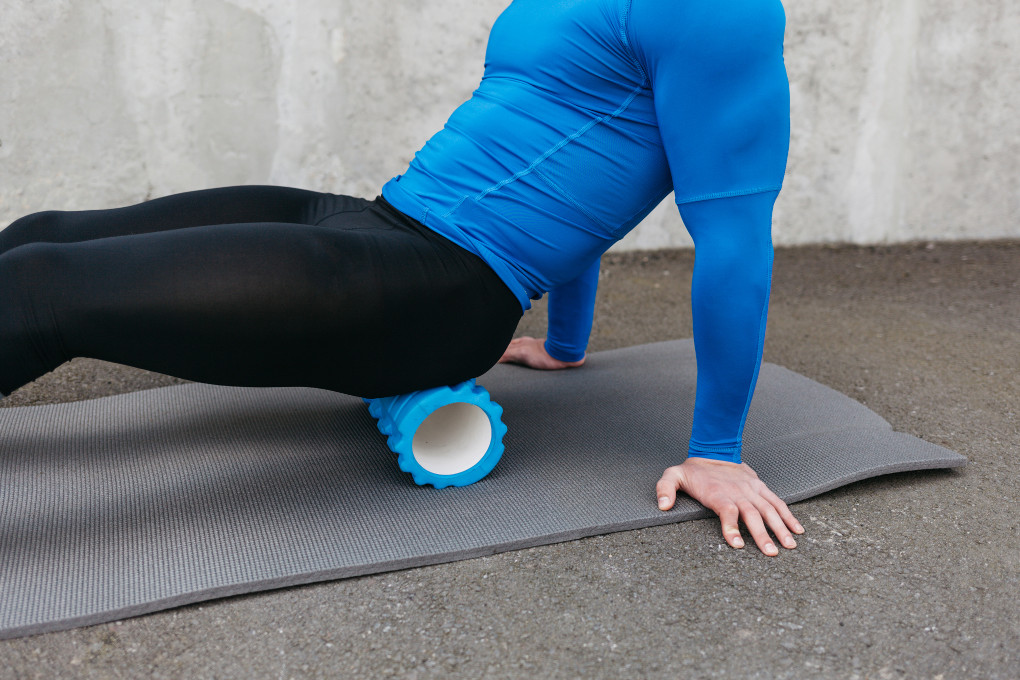You will learn:
- Why your current protocol is not working
- Things that are distracting you from being effective
- Tips on stretching and mobilizing that work
Remember the foam roller? That thing collecting dust in the corner of your gym, also collecting dust? Or your lacrosse ball? You know, the one that the dog now owns?
Honestly now, when was the last time you even thought, “Hey, I’m tight. I need to get back into stretching and mobilizing?”
Why Your Mobility and Stretching Routine Doesn’t Work
We only care to remember to take care of our bodies when something hurts, and we want to chop it off. Raise your hand.
We do the thing once – it hurts – and we pledge to never do the thing again that caused the pain in the first place. Raise your hand.
Now, we ignore the pain and hope that little blue and white pills will do the work for us. Raise your hand.
Frustrated, and the pills no longer working, we scan YouTube for someone’s slick video for a video that will save us from certain and painful doom. We watch it once, consider ourselves an expert and…maybe do it once. Raise your hand.
If this does in fact sound like you, know that you are among the millions of others like you. Welcome to the club. The conundrum here is that we lack consistency and motivation.
When we have a why, we will comply – and that’s where the magic happens.
Becoming More Effective and Efficient
 The reason why we give up our self-care routines is that we don’t prioritize them the way we do with other things in our lives.
The reason why we give up our self-care routines is that we don’t prioritize them the way we do with other things in our lives.
There are consequences if we do not self-care, such as:
- Forget to eat food? (you will be very hungry!)
- Forget to shower? (your co-workers will remind you—phew!)
- Forget to sleep? (come on, who forget this one?!)
- Forget to foam roll or stretch? (…meh.)
The reason we don’t prioritize mobility or stretching is that we think it is a once-and-done experience. But other things like eating, sleeping, going to the bathroom – these are all DAILY occurrences and we just accept it. So, what’s the hang-up with self-care for our muscles?
We need to retrain our brains to accept that muscle self-care is just as important as the above-mentioned.
Think about it: when you eat regularly – you feel energized, focused and productive. Similarly, with sleep. And who doesn’t love a nice, long hot shower? I mean, come on.
We need a method that is easy to follow, repeatable and adaptable so that our compliance stays high and the results come easy. I give you:
Deliberate Practice
This is a term that refers to any practice that is deemed purposeful and systematic. It requires focused attention and is conducted with an end-goal of achieving improved performance, not just mindless repetitions.
Why Should You Care?
This is the key to success when it comes to your own self-care for your aching muscles. If you have a plan with a systematic approach, A to B to C, with clearly defined parameters (by repetition or time), then you are creating a protocol with an end-goal of pain management.
Keys to Success: Have A Repeatable Plan
You already understand the basics: something hurts: press on it, roll on it and it gets better.
Now, put a strategy behind it. If something hurts too much, ease into it – don’t wham-bam-thank-ya-ma’am it. Add a time component: 30 seconds for small areas, 1-2 minutes for larger areas.
Lacrosse balls are smaller and more pinpoint (think upper back and shoulders). Foam rollers are slightly softer and cover a larger surface area (think quads and calves).
Time: find a slice of time during your day where you can – effortlessly and without distractions – partake in mobility. This could be first thing before the house is awake or before work. It may be before or after your gym session or before bed.
My personal favorite: while watching television. Why? It’s time where I don’t need to be fully focused with the on-screen content and can spend 22 – 44 minutes working on my body – can’t say you don’t have any time with this one.
Conclusion
So, there you have it. Flip your mindset with deliberate practice. Carve out time during your day that is your time. Plan to work on body parts that are sore and give them the time that they need. Alternate so that you are not attacking the same parts every day and to give them ample time to rest and recover.
I can tell you that once you ‘get it’, you will begin to find time all over the place to sneak in a few minutes of recovery work
P.S. think of lacrosse balls as your personal massage therapist, whose thumbs never tire – you will never have to ask your significant other for a crummy 30 second rub down ever again!
And until next time,
Stay Healthy
-Doc Erik-
